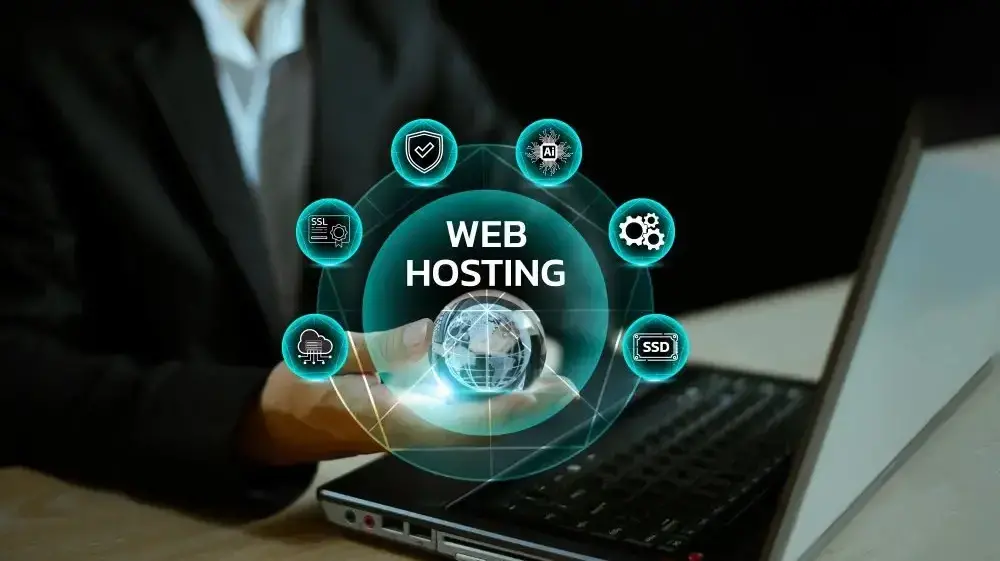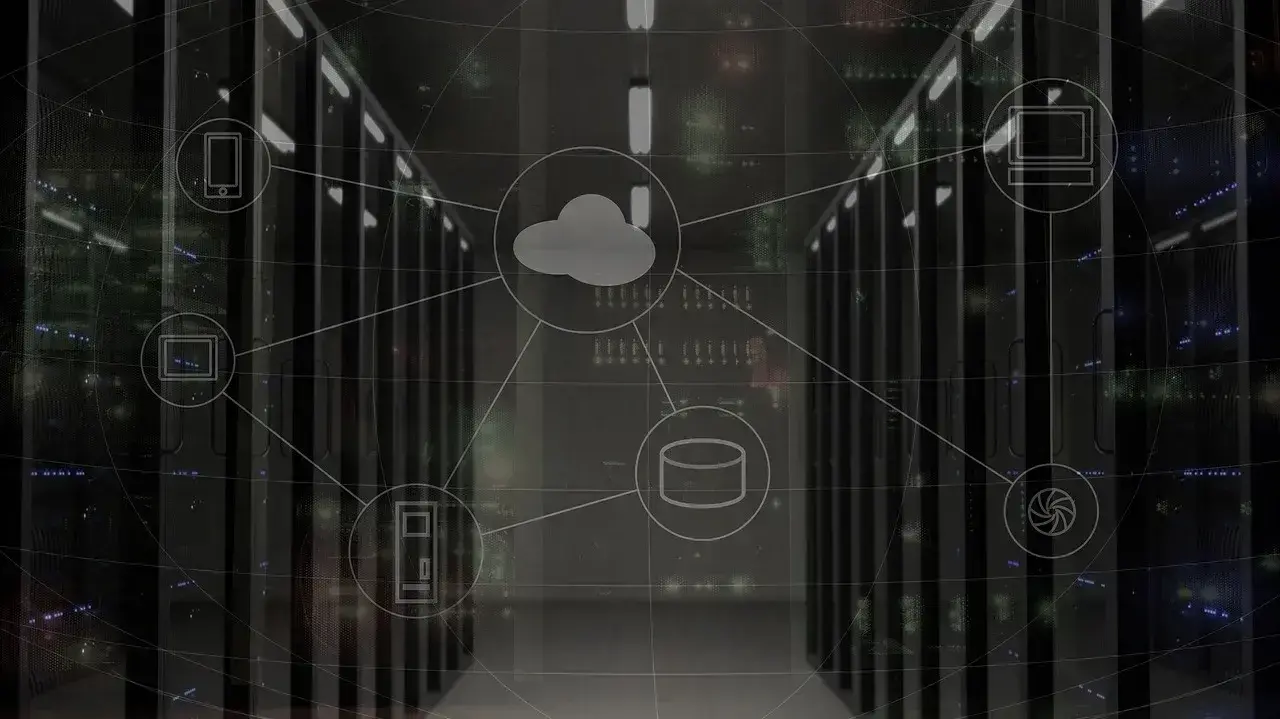You are at home, attempting to stream a movie or join a critical video conference, and your internet connection slows down. This frustrating situation is a common experience, often attributable to "bandwidth throttling." Bandwidth throttling, a term that may not be familiar to all, is commonly employed by Internet Service Providers (ISPs), network administrators, and resellers to manage network resources. It intentionally reduces data transfer speeds on internet connections, affecting both uploads and downloads and serving various purposes. For resellers, who manage bandwidth across multiple client accounts, throttling can be a strategic tool to ensure fair usage and maintain service quality for all clients.
Why It is a Commonly Used Practice
Bandwidth throttling is commonly employed for several reasons.
Congestion Management: During peak usage hours, networks can become congested due to high demand. Throttling helps alleviate this congestion by reducing the speed of data transfer for some users or applications, ensuring smoother performance for all.
Fair Usage Policies: ISPs often use throttling to enforce fair usage policies. This prevents a small number of users from consuming an excessive amount of bandwidth and negatively impacting the experience of others.
Quality of Service (QoS): Throttling can be used to prioritize specific types of internet traffic. For example, real-time services like voice and video calls may be given higher priority to ensure a consistent quality of service.
Traffic Shaping: Throttling can be part of traffic shaping strategies that allow network administrators to allocate resources to critical applications while limiting non-essential traffic.
Compliance with Regulations: In some cases, ISPs may be required to throttle certain types of traffic to comply with government regulations or content filtering policies.
Network Security: Throttling can also be a tool in network security, helping to mitigate the impact of Distributed Denial of Service (DDoS) attacks by slowing down the influx of malicious traffic.
Monetization: Some ISPs or mobile carriers might throttle certain applications or services to encourage users to subscribe to higher-tier plans that offer faster, unthrottled access to those applications.
What is Bandwidth?
Bandwidth, in the context of networking, refers to the data capacity of a network connection. It's the rate at which data can be transmitted over the network, typically measured in bits per second (bps) or megabits per second (Mbps).
Importance in Network Performance
Bandwidth is a crucial factor in determining network performance for several reasons:
Data Transfer Speed: Bandwidth directly affects how quickly data can be transmitted between devices on a network. Higher bandwidth allows for faster data transfer speeds, which is essential for applications that require rapid data exchange, such as streaming video, online gaming, and large file transfers.
Quality of Service: Sufficient bandwidth is necessary for a seamless user experience, especially in real-time applications like video conferencing, VoIP, and online gaming. Insufficient bandwidth leads to lag, packet loss, and degraded audio or video quality.
Multiple Simultaneous Users: In networks with multiple users or devices, sufficient bandwidth is essential to support concurrent data transmission without causing congestion. Without enough bandwidth, network performance can suffer as users compete for limited resources.
Scalability: Bandwidth scalability is crucial for accommodating network growth. As more devices and users are added to a network, it's important to have the flexibility to increase available bandwidth to meet the increased demand.
Cloud Services and Remote Work: In the era of cloud computing and remote work, fast and reliable internet connections with ample bandwidth are fundamental. Cloud services, remote desktop connections, and file sharing require sufficient bandwidth to function effectively.
Content Delivery: Content delivery networks (CDNs) and streaming services rely on ample bandwidth to deliver media content efficiently. For example, a streaming service needs sufficient bandwidth to transmit high-definition video content to users without buffering.
Network Applications: Different network applications have varying bandwidth requirements. For instance, web browsing requires less bandwidth than video streaming. Effective bandwidth management and allocation ensure critical applications get the needed resources.
What is Bandwidth Throttling?
Bandwidth throttling, also known as traffic shaping or bandwidth management, is a network management technique used by Internet Service Providers (ISPs) and network administrators to intentionally limit the speed at which data can be transferred over a network connection.
This practice involves setting a maximum data transfer rate for specific users, devices, or types of internet traffic. The primary goal of bandwidth throttling is to control and regulate the flow of data on a network, ensuring fair usage, managing congestion, and prioritizing certain types of traffic over others.
How Bandwidth Throttling Works
Bandwidth throttling works by placing constraints on the rate of data transmission for certain users or types of internet traffic. Here's how it operates:
Identification: ISPs and network administrators identify the users, devices, or types of data traffic that need to be throttled. This can be based on various factors, including network congestion, service plans, or content type.
Rate Limiting: Once identified, a maximum data transfer rate (measured in bits per second) is set for the target of throttling. For instance, a specific user might have their download speed capped at a certain rate.
Data Prioritization: Bandwidth throttling can also involve data prioritization. Certain types of traffic, such as real-time services like video conferencing or online gaming, may be given higher priority, ensuring that they receive adequate resources for smooth and uninterrupted performance.
Implementation: ISPs and network administrators implement bandwidth throttling through various methods, which may include Quality of Service (QoS) rules, traffic shaping policies, or deep packet inspection. These methods allow for the identification and control of data flows.
How Bandwidth Throttling Affects Users
The impact of bandwidth throttling on users can be significant:
Reduced Internet Speed: Throttling leads to slower internet speeds for affected users or applications. This means that activities like streaming, downloading large files, or online gaming can be noticeably slower.
Fair Usage Policies: ISPs use bandwidth throttling to enforce fair usage policies. While this ensures that a small number of users don't monopolize the available bandwidth, it can be frustrating for those whose speeds are limited.
Congestion Management: Bandwidth throttling can help manage network congestion during peak usage hours, preventing network slowdowns or outages.
Transparency and Disclosure: ISPs are often required to be transparent about their throttling practices, including the specific conditions under which throttling occurs and the speed limits imposed. This information allows users to make informed decisions about their internet usage.
Reasons for Bandwidth Throttling

Bandwidth throttling is employed by ISPs and network administrators for a variety of reasons, each aimed at optimizing network performance and resource allocation. Here are some of the key reasons for implementing bandwidth throttling:
Network Management
- Congestion Management: Throttling helps manage network congestion during peak usage hours. By slowing down specific users or applications, it prevents network slowdowns or outages, ensuring that everyone can access the network efficiently.
Fair Usage Policies
Ensuring Fairness: ISPs use throttling to enforce fair usage policies, ensuring that a small number of users do not excessively consume available bandwidth. Without throttling, heavy users could degrade the internet experience for others.
Preventing Abuse: Throttling prevents users from engaging in activities that could monopolize network resources, such as excessive file sharing or running servers on residential connections.
Business Models
Tiered Services: Some ISPs implement throttling as part of their business models. They offer tiered service plans, with higher-priced plans providing faster and unthrottled access. Throttling is used to encourage users to subscribe to higher-tier plans.
Zero-Rating: In some cases, ISPs might exempt certain services or content from data caps or throttling as part of partnership agreements. This can lead to certain content being favoured over others, potentially raising net neutrality concerns.
Security and Content Filtering
Security Measures: Throttling can be part of security strategies, helping to mitigate the impact of Distributed Denial of Service (DDoS) attacks by slowing down the influx of malicious traffic.
Content Filtering: Some regions or organizations might use throttling to filter or block access to specific websites or content deemed inappropriate or illegal.
Network Optimization
- Traffic Shaping: Network administrators use bandwidth throttling as a part of traffic shaping strategies. This allows them to allocate resources to essential applications while limiting non-essential traffic, ensuring efficient network resource utilization.
While bandwidth throttling can have legitimate purposes, it has raised concerns regarding net neutrality, transparency, and user privacy. Its implementation and effects are under regulatory scrutiny and public debate in many regions.
How to Detect Bandwidth Throttling
Detecting bandwidth throttling can be challenging, but there are certain signs and tools that can help you identify it:
Signs of Bandwidth Throttling
Consistent Slow Speeds: If you consistently experience slower internet speeds, especially during specific times of the day or when using certain services, it could be a sign of throttling.
Inconsistent Performance: Your internet performance may be inconsistent, with frequent slowdowns during activities that require high bandwidth, such as streaming or online gaming.
Unexpected Speed Drops: If your internet speed suddenly drops significantly, it could indicate throttling. These drops might occur during certain activities or on specific websites.
Inability to Reach Advertised Speeds: If you have subscribed to a high-speed internet plan but never seem to achieve the advertised speeds, it might be a sign of throttling.
Tools for Detecting Bandwidth Throttling
Speed Test Tools: Various online speed test tools like Ookla's Speedtest, Fast.com, or Google's Measurement Lab (M-Lab) can help you measure your internet speed. Consistently lower speeds than what you're paying for may indicate throttling.
VPN Tests: Using a VPN (Virtual Private Network) can sometimes bypass throttling. If your internet speed significantly improves when using a VPN, it may suggest that your ISP is throttling your traffic.
Throttling Detection Services: There are online services and apps designed to detect throttling. One such service is the Internet Health Test by Battle for the Net. It checks for signs of throttling, especially in the context of net neutrality concerns.
Network Monitoring Tools: Tools like Wireshark or GlassWire can help you analyze your network traffic. If you notice a pattern of speed reductions for specific types of traffic, it could indicate throttling.
Usage Patterns: Keep track of your internet usage patterns. Throttling may be more likely during peak usage hours or after exceeding data caps imposed by your ISP.
Contacting Your ISP: If you suspect throttling, you can contact your ISP and inquire about their throttling policies and practices. They may provide information about whether and under what circumstances throttling is applied.
Third-Party Applications: Some third-party applications and browser extensions can help monitor network performance and may provide insights into whether your bandwidth is being throttled.
The Pros and Cons of Bandwidth Throttling
Pros
Cons
Pros of Bandwidth Throttling
- Better Network Management: Bandwidth throttling effectively manages network congestion, ensuring network functionality during peak times.
- Fair Usage Policies: Throttling enforces fair usage, preventing bandwidth monopolization and providing equitable access.
- Quality of Service (QoS): Throttling prioritizes real-time traffic like VoIP and video conferencing, ensuring consistent service quality for essential applications.
- Security Measures: Throttling helps mitigate DDoS attacks, protecting network resources and maintaining service availability.
Cons of Bandwidth Throttling
- Reduced Internet Speed: Throttling leads to slower Internet speeds for affected users, impacting activities like streaming, downloading, and gaming.
- Net Neutrality Concerns: Throttling may favour specific content or services, raising concerns about net neutrality and fairness.
- Transparency and Disclosure: Some ISPs lack transparency about throttling practices, causing user dissatisfaction and mistrust.
- Incentives for Higher-Tier Plans: Throttling can encourage premium plan subscriptions but may limit access for those with budget constraints.
- Privacy Concerns: Deep packet inspection used in throttling may raise privacy concerns due to data monitoring and potential interception.
Legal and Ethical Considerations of Bandwidth Throttling

Net Neutrality
The debate over bandwidth throttling is closely tied to the concept of net neutrality. Net neutrality is the principle that all internet traffic should be treated equally, without discrimination or preferential treatment by ISPs.
Net Neutrality Violations: Bandwidth throttling, according to some, may favour specific internet traffic or services, potentially violating net neutrality principles. ISPs could prioritize their own or partner services, creating an unequal online environment.
Regulatory Measures: Some countries, including the United States, have proposed net neutrality regulations to prevent practices like throttling. The Open Internet Order in the U.S., for example, sought to ensure that ISPs could not block or throttle lawful Internet content.
Challenges and Litigation: Bandwidth throttling has led to legal challenges and disputes about net neutrality. High-profile cases, like the legal battle between the FCC and major ISPs, highlight the complexities and ongoing debates surrounding net neutrality and throttling.
User Rights
User rights in the context of bandwidth throttling revolve around the right to access a free and open internet, transparency, and privacy:
Transparency: Users have the right to know when, why, and how their internet connections are throttled. Lack of transparency can lead to user frustration and mistrust.
Privacy Concerns: Deep packet inspection, a method sometimes used in bandwidth throttling, raises privacy concerns as it involves analyzing the content of data packets. Users have the right to expect their data to be treated with privacy and security.
Access to Information and Services: Bandwidth throttling can limit users' access to information, services, and content, potentially affecting their ability to use the internet for educational, professional, or personal purposes.
Tips to Bypass or Minimize Bandwidth Throttling

Use a VPN (Virtual Private Network)
A VPN encrypts your internet traffic and routes it through a server in a different location. This can help bypass bandwidth throttling This is effective because it hides your internet activities from your ISP. However, some ISPs can detect and throttle VPN traffic, so it may not work in all situations.
Data Compression
Compressing data before sending it over the internet reduces the amount of data being transferred. This can help overcome throttling, especially for activities like web browsing or email. However, it is ineffective for activities like streaming high-definition videos, which rely on uncompressed data.
Choose Off-Peak Hours
ISPs often throttle during peak usage hours. To minimize the impact, schedule bandwidth-intensive activities during off-peak times when network congestion is less likely. However, it is important to note this may not be suitable for everyone's schedule.
ISP Negotiation
Contact your ISP to discuss throttling concerns. In some cases, ISPs may adjust their policies or offer you an upgraded plan to alleviate throttling. However, the effectiveness of this solution depends on the ISP's willingness to cooperate.
It is important to note that while these methods can help bypass or mitigate bandwidth throttling, their effectiveness can vary depending on your situation and ISP practices. Combining these tips may provide the best results for a smoother and faster internet experience, especially during peak usage times.
Case Study: Comcast's P2P Throttling Controversy (2007)
In 2007, Comcast, a major US ISP, faced controversy due to bandwidth throttling. They interfered with peer-to-peer (P2P) file sharing, causing network congestion. Comcast used TCP connection termination packet manipulation, disrupting P2P file transfers and frustrating users.
This had a significant impact as users couldn't effectively use P2P applications, harming their internet experience. It underscored the importance of transparency and net neutrality. Comcast's actions violated net neutrality principles, leading to public outcry and regulatory changes in their network management practices.
The Future of Bandwidth Throttling
Technological Developments
Technological developments are poised to reshape bandwidth management and throttling practices. ISPs and network administrators will use advanced techniques for smarter network management, aided by technologies like AI and machine learning, to identify and address congestion efficiently.
The advent of 5G networks and growth in edge computing may enhance network performance, reducing the reliance on bandwidth throttling, especially in densely populated regions. ISPs may explore models like zero-rating and tiered services, offering faster access to specific content while complying with net neutrality principles.
User Expectations
As technology advances and the demand for high-quality streaming, online gaming, and video conferencing grows, users will expect unrestricted data consumption. These expectations stem from privacy concerns, prompting users to call for ISP transparency in throttling practices and secure data handling.
Demands for consistent, reliable internet service will increase, with users less tolerant of unexpected slowdowns, potentially favouring ISPs with predictable performance. Users will also persist in advocating for net neutrality principles, pushing ISPs and regulators to maintain a fair online environment.
The future of bandwidth throttling will be influenced by the regulatory environment, as governments and regulatory bodies may enact laws related to net neutrality and bandwidth management.
Conclusion
Looking ahead, the future of bandwidth throttling will be shaped by technological progress, user demands, and changing regulations. Balancing efficient network management with an open and fair internet is a complex but essential challenge. For hosting resellers and users of services like reseller hosting, adapting and implementing effective bandwidth management strategies will be crucial for success and competitiveness. As throttling practices evolve, it's vital to stay informed about net neutrality and bandwidth management in your area. Advocating for transparency and engaging in discussions about the internet's future is important to maintain a fair online environment.
Frequently Asked Questions
Is bandwidth throttling legal?
The legality of bandwidth throttling depends on local regulations and the specific practices of ISPs. Some countries have laws protecting net neutrality, while others do not.
Can ISPs throttle my internet without my consent?
ISPs often include bandwidth management policies in their terms of service, which users implicitly agree to when signing up.
Are there specific times of day when Bandwidth Throttling is more likely to occur?
Yes, Bandwidth Throttling is more likely to occur during peak usage hours when network congestion is high.
How can I find out if my internet connection is being throttled?
You can use online speed test tools, VPNs, or specialized throttling detection services to check for signs of throttling.
What is the relationship between Bandwidth Throttling and Net Neutrality?
Bandwidth Throttling can impact net neutrality by potentially prioritizing specific internet traffic, creating concerns about an open and equal internet.
Can Bandwidth Throttling target specific websites or services?
Yes, it can target specific websites or services by slowing down their data traffic, making them less accessible or usable.
How does Bandwidth Throttling work in a corporate or educational network setting?
In these settings, Bandwidth Throttling is used to allocate network resources, prioritize essential applications, and manage network congestion to ensure the smooth operation of critical services.
What is a "Fair Use Policy," and how is it related to Bandwidth Throttling?
A Fair Use Policy is a set of guidelines that govern acceptable and responsible use of a service. It can be related to Bandwidth Throttling because ISPs use throttling to enforce fair usage policies.
Are some types of internet connections more prone to throttling than others?
Mobile data connections are often more prone to throttling due to data caps and network congestion, but throttling practices can vary among different types of connections.
How do ISPs justify the use of Bandwidth Throttling?
ISPs justify Bandwidth Throttling as necessary for network management, congestion control, and fair resource allocation, which helps ensure a smoother internet experience for all users.
Are there alternatives to Bandwidth Throttling for managing network resources?
Yes, alternatives include traffic shaping, Quality of Service (QoS) policies, and investment in network infrastructure to handle increased demand.

Yetunde Salami is a seasoned technical writer with expertise in the hosting industry. With 8 years of experience in the field, she has a deep understanding of complex technical concepts and the ability to communicate them clearly and concisely to a wide range of audiences. At Verpex Hosting, she is responsible for writing blog posts, knowledgebase articles, and other resources that help customers understand and use the company's products and services. When she is not writing, Yetunde is an avid reader of romance novels and enjoys fine dining.
View all posts by Yetunde Salami




















